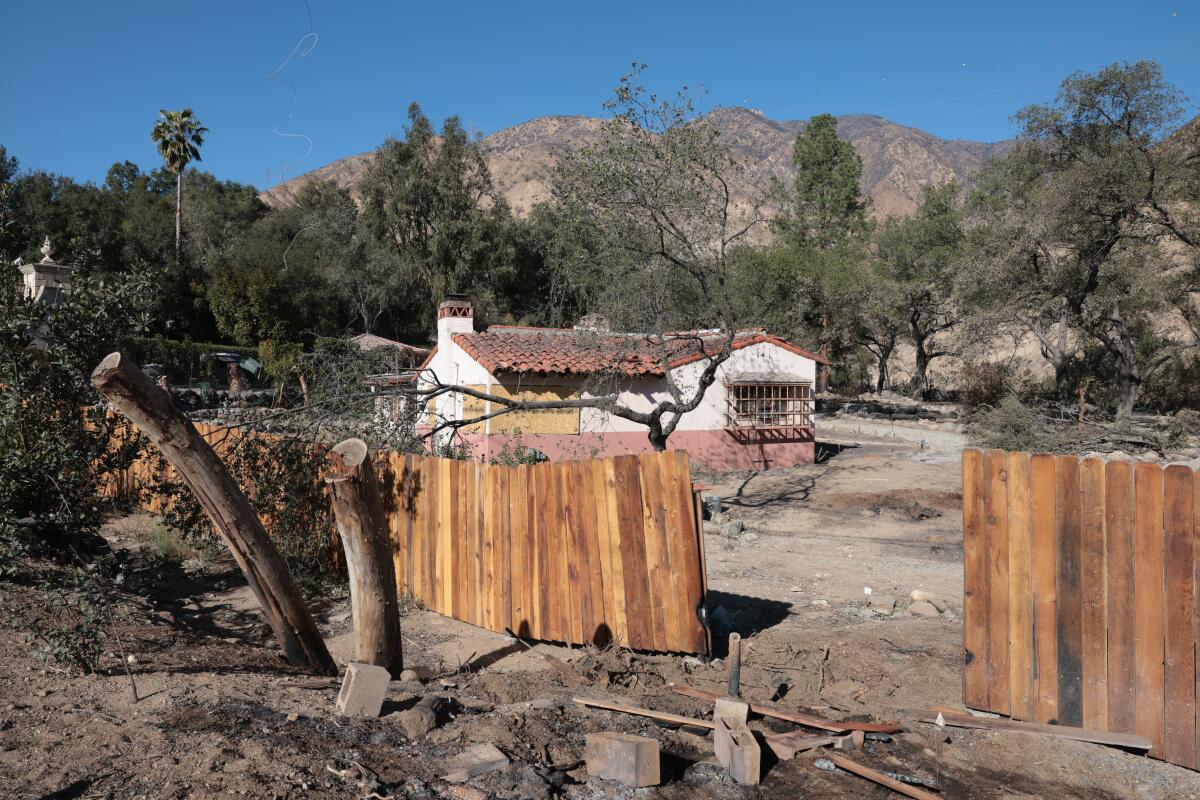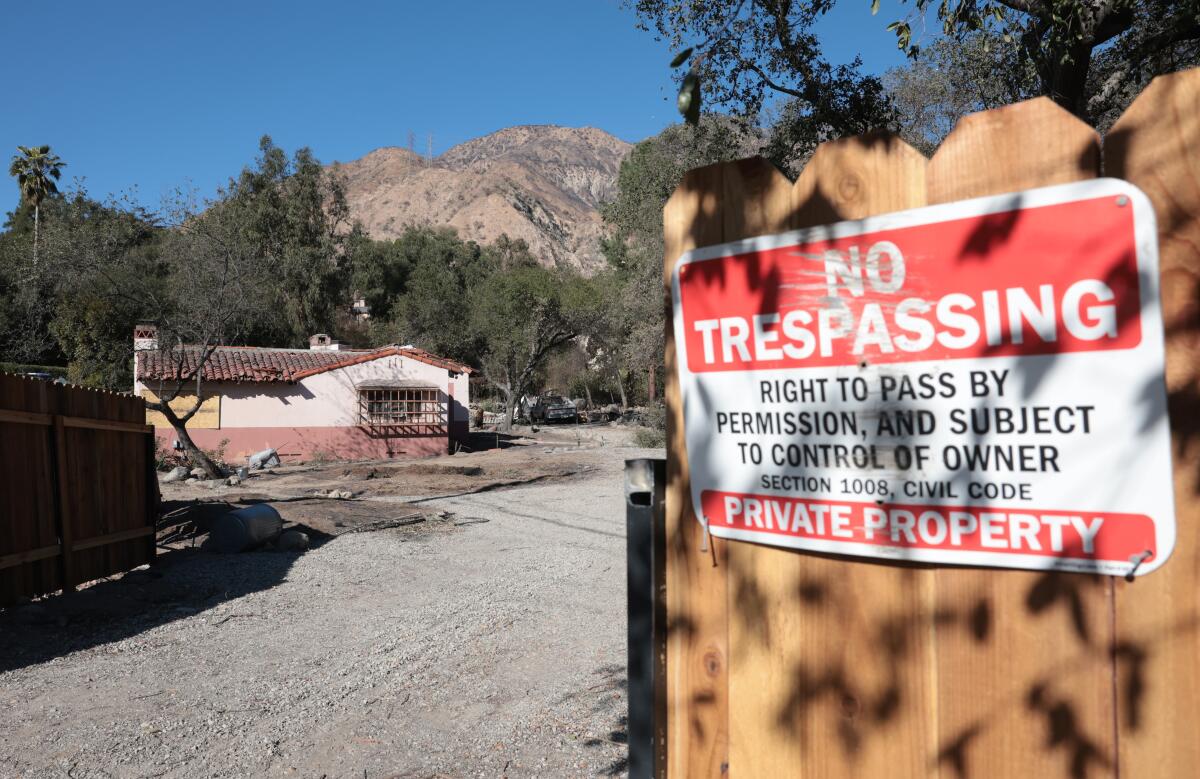-
Jake Sullivan, White House National Security Adviser, Reflects on China Policy - 4 hours ago
-
Jimmy Butler Issues With Heat Stemmed From Lack of Big Trades - 5 hours ago
-
Indigenous practices mitigated Eaton fire damage, Tongva leaders say - 6 hours ago
-
UFC 311 Recap: Islam Makhachev and Merab Dvalishvili Retain Titles in Los Angeles - 10 hours ago
-
California attorney general says bidding wars not exempt from price-gouging rules - 12 hours ago
-
Winter Storm Is Bringing at Least 6 Inches of Snow to the Northeast - 14 hours ago
-
Texans’ DeMeco Ryans Seemingly Takes Shot at NFL Officiating Following Loss to Chiefs - 15 hours ago
-
5 major banks offer mortgage relief in fire-ravaged L.A. areas, Newsom says - 19 hours ago
-
How to Watch Texans vs Chiefs: Live Stream NFL Divisional Playoffs, TV Channel, Prediction - 21 hours ago
-
What Border Crisis? Mexican Migrant Shelters Are Quiet Ahead of Trump - 1 day ago
Indigenous practices mitigated Eaton fire damage, Tongva leaders say
The descendants of the Los Angeles Basin’s first people had not had land of their own for nearly 200 years.
Two years ago, a 1-acre property in suburban Altadena dotted with oak trees and shrubs became the first parcel of land returned to the Tongva people. They finally had a space to host traditional ceremonies, community gatherings and other events.
The fire that broke out in the hills near Eaton Canyon Jan. 7, charring more than 14,000 acres as of Friday, caused significant damage to the property, including the destruction of an old stone house and a garage on the land.
Still, the losses could have been much worse if not for the Indigenous practices implemented on the land, according to the Tongva Taraxat Paxaavxa Conservancy, a nonprofit dedicated to restoring and protecting the land and cultural heritage of the Tongva people in the L.A. region.
Wallace Cleaves, president of the conservancy’s board, credits traditional stewardship practices — including the removal of 97 fire-prone eucalyptus trees — with reducing the wildfire’s impact.

Wallace Cleaves, president of the Tongva Taraxat Paxaavxa Conservancy, credits traditional stewardship practices — including the removal of 97 fire-prone eucalyptus trees — with reducing the wildfire’s impact.
(Myung J. Chun / Los Angeles Times)
“We do believe that the work that we did to remove the invasive and dangerous species on the property very likely mitigated the damage, and made it much more possible for the native plants there to be able to recover and not have suffered as much,” he said.
For thousands of years, the Tongva people flourished in the San Gabriel Mountains. Its canyons offered ample food and served as trading routes among far-flung Native communities. But by the early 20th century, following the displacement and enslavement wrought by successive waves of settlers — the Spanish, the Mexicans and then white Americans — the Tongva had lost their ancestral homeland in Southern California.
Without federal recognition or a reservation, they have sought through the “Land Back” movement to have available land returned to them, Cleaves and conservancy board member Charles Sepulveda wrote in a 2021 article for Bloomberg.
“We need a place where we can gather our foods, medicines and sacred plants without having to fear the arbitrary restrictions of a land management system that has mismanaged the land so badly that it now burns without end,” they wrote. “We need a place where we can gather and renew ourselves, our culture and our community.”
The 1-acre property that now provides renewed connection for the Tongva people had belonged to Sharon Alexander, whose family built a Spanish ranch-style home on the wooded parcel in 1931. Alexander, who was using the home as a rental, transferred the land to the Tongva people in 2022 after learning of its ancestral significance.
Since then, the Tongva community has worked to restore the land in accordance with traditional ecological knowledge and to develop the property to support community gatherings.
Along with removing the eucalyptus trees, they have nurtured 50 full-grown oak trees and removed tons of old firewood and other debris, Cleaves said. Cultural burning is another traditional land stewardship practice, but the Tongva have so far been unable to implement it on the property because of permitting requirements.
“Our duty is to be good stewards of the land, of the plants and the animals that are under our care,” Cleaves said. “So a lot of our efforts went to restoring as much of the Indigenous habitat as we could.”
Cleaves has been unable to visit the land since the wildfire roared through Eaton Canyon, devastating large swaths of Altadena. But he believes based on publicly available images that the ranch house on the property remains relatively intact. Nobody was living on the property, he said.
And while some of the oak trees appear scorched, many still have green leaves, he said. The oak is one of the Tongva people’s sacred plants; its acorns are a staple in traditional meals.
“We know our oak, and we know that it is very resilient,” he said. “We’re hopeful that most of the oaks will be able to recover from this and continue to be healthy and be part of our community there.”
A bobcat, coyotes and bears also visited the land, he said. He is unsure how they have fared.
Cleaves said he is hopeful the Tongva people will be able to return to the property for ceremonies later this year.
“When we think about Indigenous-led approaches, such as cultural burning or other Indigenous stewardship, it does help with mitigating and building resilience against climate change,” said Nina Fontana, a research scientist at UC Davis focused on Indigenous land stewardship.

Two years ago, this 1-acre property in Altadena became the first parcel of ancestral land returned to the Tongva people in nearly 200 years.
(Myung J. Chun / Los Angeles Times)
As the Los Angeles region begins to recover and rebuild from the devastating fires in Altadena and Pacific Palisades, it is critical for state and federal agencies to work alongside tribal communities to incorporate Indigenous experience, Fontana said. Practices such as cultural burning are place-based, developed around a particular topography and ecosystem, she said.
“It’s important to listen to Indigenous voices and to understand that the knowledge that communities hold is thousands and thousands and thousands of years of knowledge,” she said. “I think that listening and allowing that knowledge to be practiced is really the key to the future of wildfire.”
This article is part of The Times’ equity reporting initiative, funded by the James Irvine Foundation, exploring the challenges facing low-income workers and the efforts being made to address California’s economic divide.
Source link












